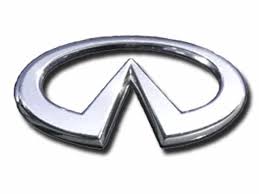M35 V6-3.5L (VQ35HR) (2009)
/Page-176001.png)
Alignment: Service and Repair
Front Suspension
FRONT SUSPENSION ASSEMBLY
Wheel Alignment Inspection
DESCRIPTION
Measure wheel alignment under unladen conditions.
NOTE:
"Unladen conditions" means that fuel, engine coolant, and lubricant are full. Spare tire, jack, hand tools and mats are in designated positions.
PRELIMINARY CHECK
-
Check tires for improper air pressure and wear.
-
Check road wheels for runout. Refer to See: Wheels and Tires/Wheels/Testing and Inspection.
-
Check wheel bearing axial end play.
-
Check transverse link ball joint axial end play. Refer to See: Steering and Suspension/Suspension/Control Arm/Service and Repair/Transverse
Link.
-
Check shock absorber operation.
-
Check each mounting part of axle and suspension for looseness and deformation.
-
Check each of suspension member, shock absorber, upper link and transverse link for cracks, deformation and other damage.
-
Check vehicle height (posture).
GENERAL INFORMATION AND RECOMMENDATIONS
-
A four-wheel thrust alignment should be performed.
- This type of alignment is recommended for any NISSAN/INFINITI vehicle.
- The four-wheel "thrust" process helps ensure that the vehicle is properly aligned and the steering wheel is centered.
- The alignment rack itself should be capable of accepting any NISSAN/INFINITI vehicle.
- The rack should be checked to ensure that it is level.
-
Make sure the machine is properly calibrated.
- Your alignment equipment should be regularly calibrated in order to give correct information.
- Check with the manufacturer of your specific equipment for their recommended Service/Calibration Schedule.
THE ALIGNMENT PROCESS
IMPORTANT:
Use only the alignment specifications listed in this Service Manual.
-
When displaying the alignment settings, many alignment machines use "indicators": (Green/red, plus or minus, Go/No Go). Do not use these
indicators.
- The alignment specifications programmed into your machine that operate these indicators may not be correct.
- This may result in an ERROR.
-
Some newer alignment machines are equipped with an optional "Rolling Compensation" method to "compensate" the sensors (alignment targets or
head units). Do not use this "Rolling Compensation" method.
- Use the "Jacking Compensation Method". After installing the alignment targets or head units, raise the vehicle and rotate the wheels 1/2 turn both
ways.
- See Instructions in the alignment machine you're using for more information on this.
INSPECTION OF CAMBER, CASTER AND KINGPIN INCLINATION ANGLES
-
Camber, caster, kingpin inclination angles cannot be adjusted.
-
Before inspection, mount front wheels onto turning radius gauge. Mount rear wheels onto a stand that has same height so vehicle will remain
horizontal.
